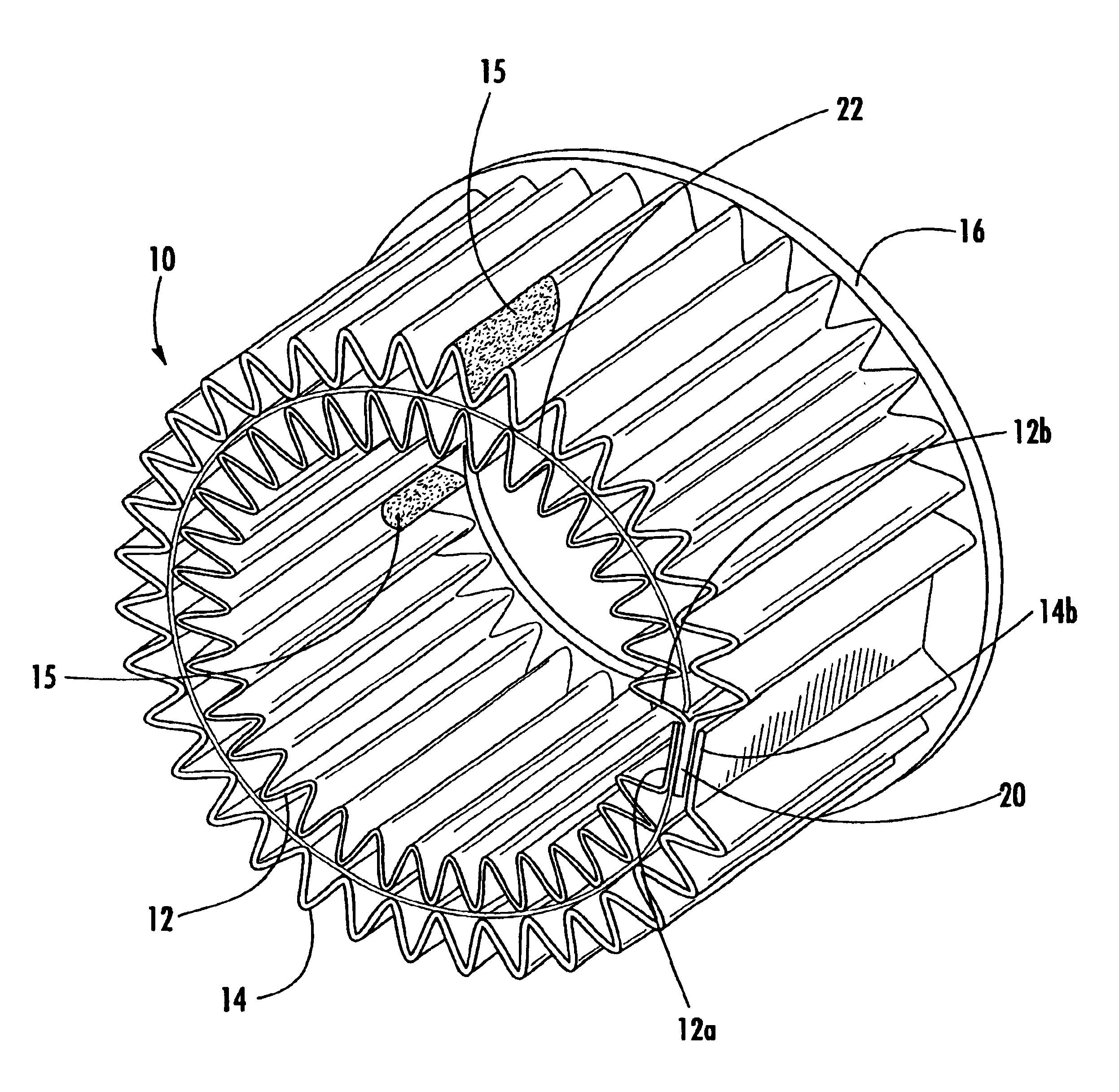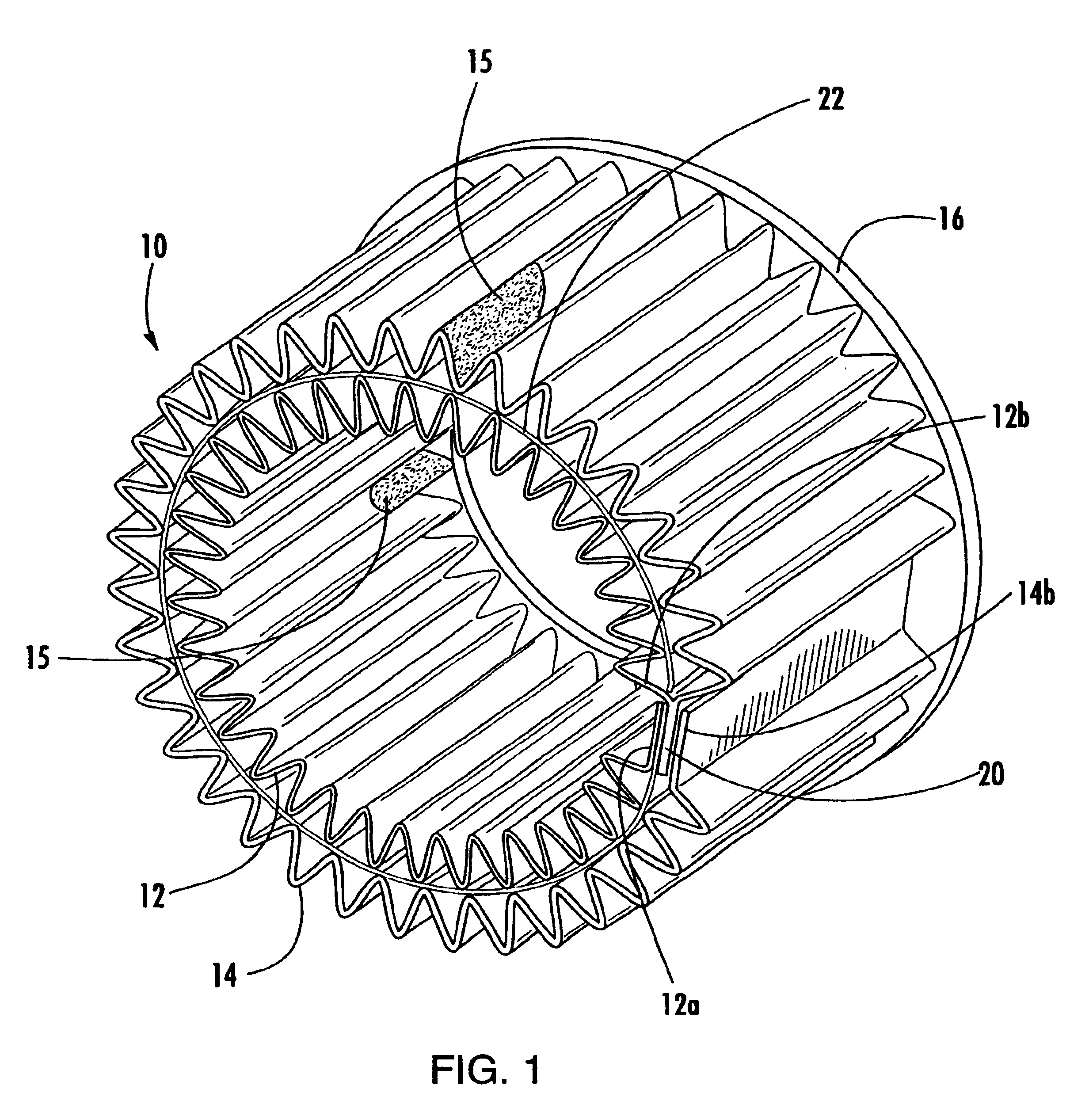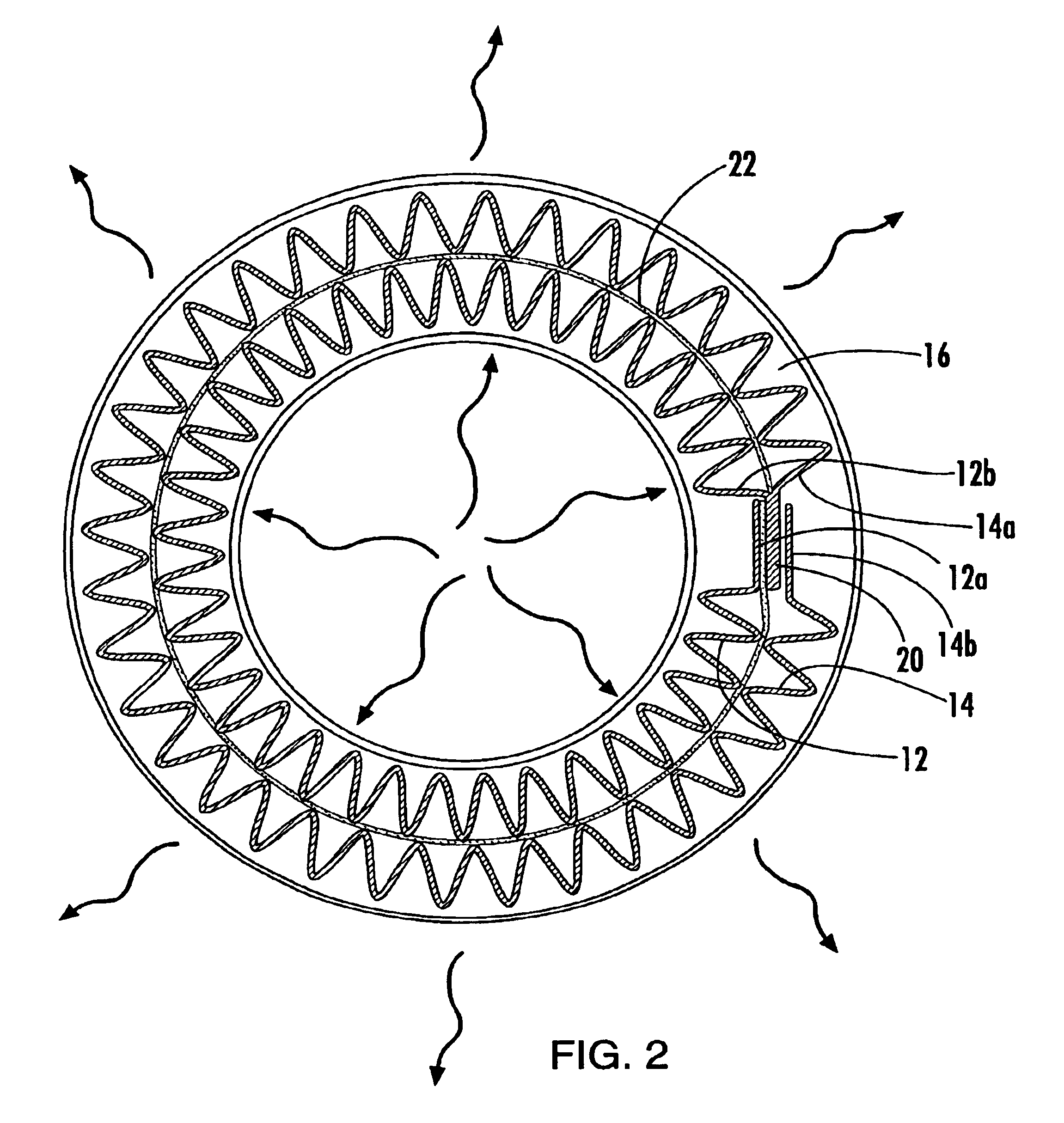Bifilar diesel exhaust filter construction using sintered metal fibers
a technology of metal fibers and bifilar diesel, which is applied in the direction of filtration separation, auxillary pretreatment, separation processes, etc., can solve the problems of high initial cost, high energy consumption and high maintenance cost, and insufficient passive particulate filters, etc., to improve overall performance, improve the overall performance, and improve the effect of particle holding capacity
- Summary
- Abstract
- Description
- Claims
- Application Information
AI Technical Summary
Benefits of technology
Problems solved by technology
Method used
Image
Examples
example
[0044]
Using a DC Power source of 12 volts, theLayer 1Layer 2following results were achieved:(inside)(outside)Material UsedFilterFiltermedia Amedia BResistance (ohms)0.20.1Heat Generated (watts)320160Temperature (degree C.)800600
[0045]As can be seen from the foregoing data, it is possible to adjust the heat generated by the layers 12, 14 by modifying the characteristics of the layer. Such adjustment may be desired to control the amount of regeneration for a given layer 12, 14. For example, it may be desirable for the downstream layer to have higher heat because heat is lost across the filter construction10. On the other hand, the upstream layer may not need as much heat for regeneration because there is less power loss closest to the source of the exhaust flow. With the present invention, the regeneration of the layers 12, 14 may be finely controlled.
[0046]In a given layer, the material itself may be modified. For example, the layers 12, 14 may use different types of metal sintered a...
PUM
| Property | Measurement | Unit |
|---|---|---|
| temperatures | aaaaa | aaaaa |
| electrically resistive | aaaaa | aaaaa |
| electrically connected | aaaaa | aaaaa |
Abstract
Description
Claims
Application Information
 Login to View More
Login to View More - R&D
- Intellectual Property
- Life Sciences
- Materials
- Tech Scout
- Unparalleled Data Quality
- Higher Quality Content
- 60% Fewer Hallucinations
Browse by: Latest US Patents, China's latest patents, Technical Efficacy Thesaurus, Application Domain, Technology Topic, Popular Technical Reports.
© 2025 PatSnap. All rights reserved.Legal|Privacy policy|Modern Slavery Act Transparency Statement|Sitemap|About US| Contact US: help@patsnap.com



